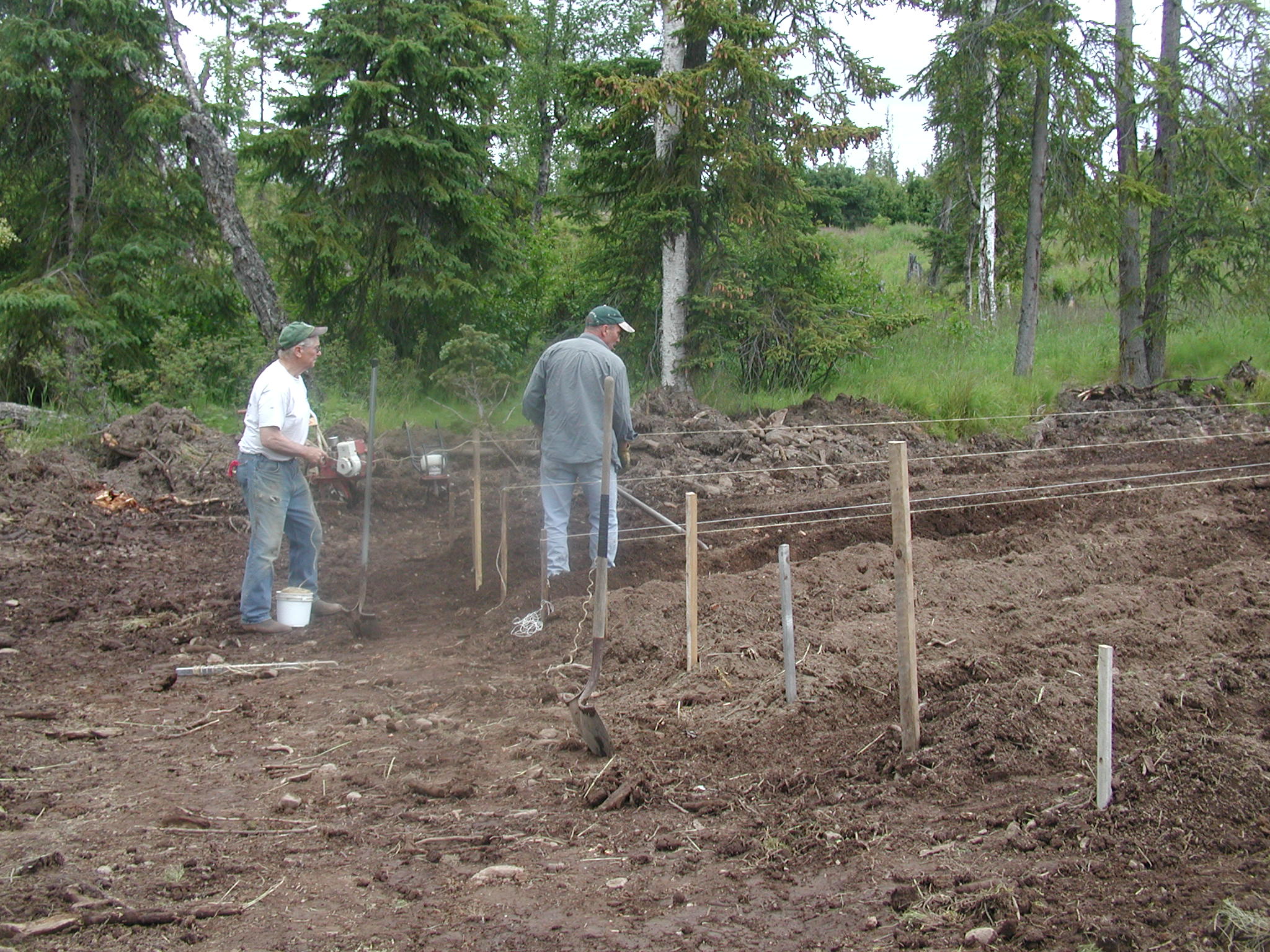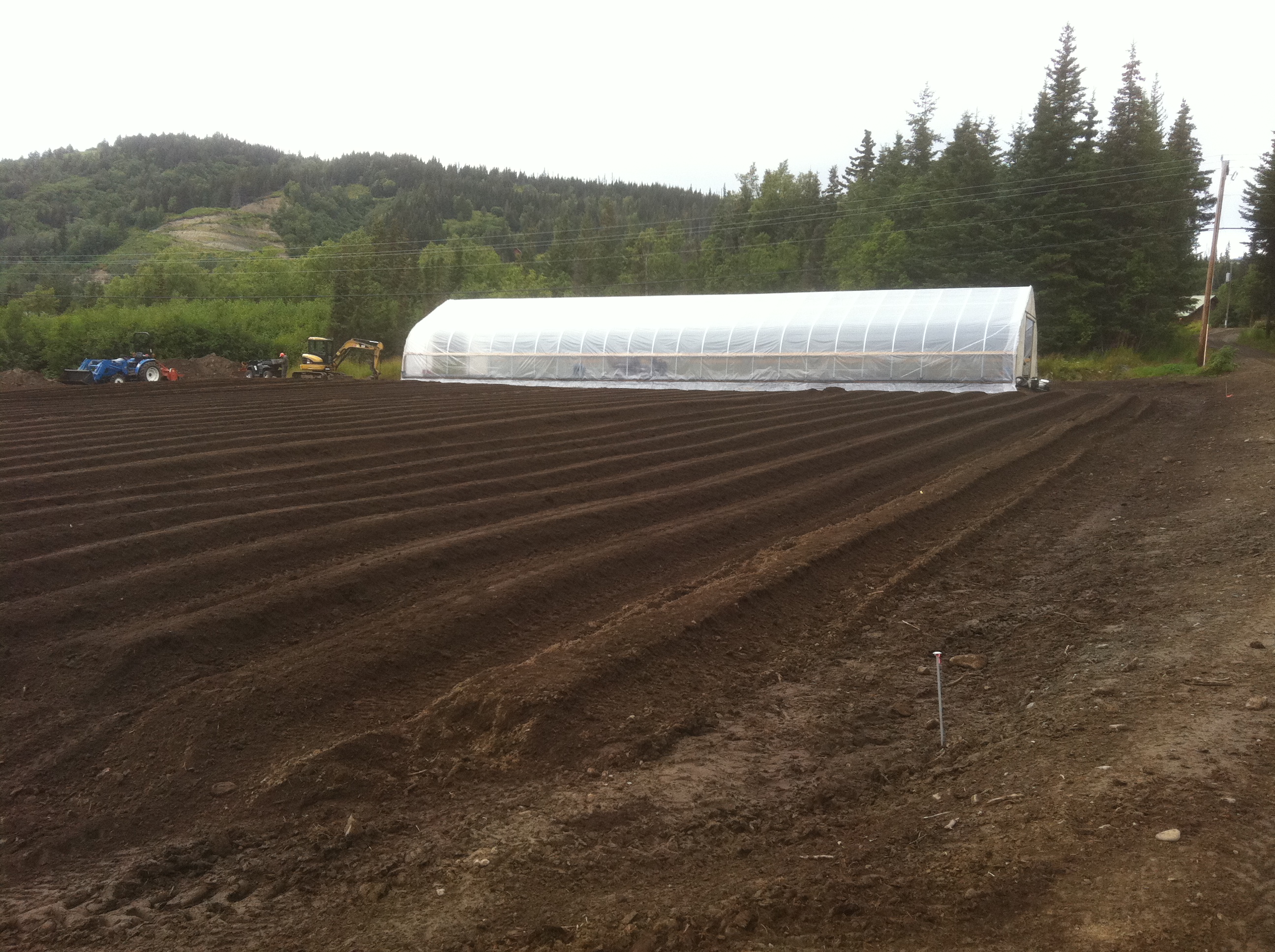Laying out your field continued
March 7, 2016
Categories: Starting a New Farm
How far apart should my rows be? How long should they be? Should I typar my fields? What about access for maintenance? Should I hill my rows and if yes, how high? All important decisions to make next. You only plant once (hopefully) but you will be harvesting the entire life of your farm. Think about that now and I promise, your farm life will be better.
For instance, how long should my rows be? How far do you want to walk with your arms full to put your stems in the carts to go to the packhouse? We try to not make our rows longer than 150 feet and we now have a walkway halfway up all the rows. Unfortunately the root suppliers do not take any of this into consideration in how they sell their roots. Some sell in 60‘s, 70‘s, 75 or 100. None of these numbers normally work in my 150 foot rows. Having 60 of a pink Sarah in a row and finishing that row with a pink Dr. Alexander Fleming will cause nightmares the rest of your farm‘s life. Pot up the extras and sell them at the market or give them to a friend or plant them out in your home garden - or throw them away. I promise you, it is the only way to go!!


We have gone back to our first 2 original fields and hilled all our rows in an attempt to help with drainage. But how high should the raised rows be? My Husband Leroy invented an implement for the back of our tractor that takes the good top soil that has been amended and makes a hill about 12 inches tall and about 18 inches wide. When we plant and in subsequent years it does settle a bit but this is where we start. Taking this into consideration, if you don‘t have really deep top soil, you can get more depth by hilling, pulling up the good soils and leaving the paths with the not so good.
We believe you shouldn‘t hill too high however as the roots will be exposed to cold as your hills are only 18 wide at the most and roots certainly grow wider than 18”. You want those roots to go deep in the ground. It‘s one of the balancing acts. There are implements you can purchase or rent to make your hills. On the Kenai Peninsula the Soil and Water folks have all types of rentals. www.kenaisoilandwater.org. Or call SWCD at (907) 283-8723 X 5.
From the center of each row to the center of the next row is 4 feet in our best fields. We started off at 30 inches and found that too close then went to 36 inches and now are at 4 feet. This leaves enough room for us to walk between the rows harvesting and to take care of maintenance without injuring the plants (injuries leave wounds perfect for hosting spores of fungus and makes them susceptible to virus etc) We build 8 rows then have a maintenance path/road. This road should equate to your personal equipment. Ours are plenty wide for our 4 and 6 wheelers. We have 3 six wheelers and 3 four wheelers now and use them every single day throughout the season. Our favorite lay out is 5 of these blocks/sections of 8 rows then an access road for a total of 40 rows in each field. We grow grass in the maintenance rows, kept mowed regularly.


Generally speaking plants within the row should have 24 to 30 inches minimum between plants. The balance is enough for air flow but close enough to be efficient in harvesting and to assist in holding up each other. We plant generally 18 inches within our rows.
Having given you all this data, here is a caveat. Some varieties grow much larger and faster than others. Duchess de Nemours as an example can have 50 stems in a few years. Other varieties such as any of the Charms may never have over 20 stems. It makes sense then to have more space within your rows between Duchess and less between the Charms. Last year we went through our second field of Duchess and removed several plants to allow more air flow and made access rows throughout the fields. A new grower can avoid these errors by doing more research on varieties and their habits before planting.
Categories
- Marketing (2)
- Post Harvest (6)
- Starting a New Farm (11)
